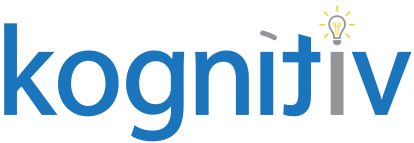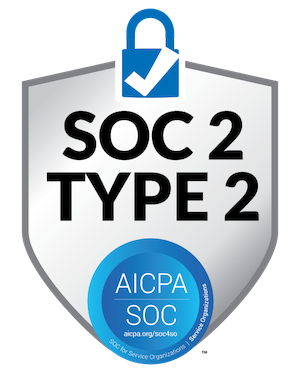Using Workday Surveys and Campaigns to Communicate with Your Workforce

PART I: THE STRUGGLE IS REAL
It’s such a common struggle in the human resources technology game – company needs to know something from employees, but how to go about it? What mechanism is best to request and receive the information?
Here’s the specific problem statement: my customer needed to present options and collect responses for a once-annual voluntary deduction. These questions had to be tailored to each audience (four in total) who would be responding. It was essential that the process:
- proactively delivered an action to each eligible employee
- presented clear instructions and options to the employee
- allowed for easy reporting of the responses
- was carried out during a particular window of time
So how is my customer to go about this? Let’s review some of the classic options for collecting information:
- Paper form? Awful. Time to party like it’s 1979.
- Email? Everyone’s living nightmare – limited ability for tracking response completion and reporting on response data.
- Shared spreadsheet? Opposite of confidential and/or secure. Next.
- External survey tool? Just that – External. Exists independent of the system of record with none-to-limited related supporting data for reference or context.
PART II: CAN WE DO BETTER?
There’s got to be a better way, right? Since my customer recently went live with Workday, options we considered included:
- Benefit Event / Open Enrollment – Workday Benefits is more aptly suited to on-going benefit elections as opposed to one-time voluntary deductions. It also would have required more configuration overhead than desired.
- Custom Object – Creating a set of custom fields to collect the data and report on was theoretically possible, but the user experience was not seamless enough.
- Distribute Documents or Tasks – Form-based feedback didn’t provide the reporting capability nor the ability to adequately tailor content to the four populations involved.
- Request Framework – while it is possible to launch questionnaires with the Request Framework, it didn’t support delivering a tailored task to each of the audiences.
PART III: A NEW HOPE
When we tallied up all the pros and cons, ultimately none of the above potential solutions fit the need. We needed a way to deliver the employees’ options, collect the responses, and ease the pain of reporting on the results. Enter Workday Surveys and special guest star Workday Campaigns.
If you haven’t used either before, you can think of Workday Surveys as the questionnaire itself and Workday Campaigns as the delivery framework. Let’s break down the core configuration components:
Survey – the questionnaire to be completed by a given group of respondents.
- Surveys can include multiple questions of different types, including text, number, multiple choice (single and multiple select), and date.
- Answers to a question can be optional or required.
- Surveys can be set to allow one or multiple responses (i.e. can be set for single-use or recurring)
Campaign – the delivery mechanism for the survey. Campaigns accomplish multiple things:
- Help to control the list of respondents using the Audience functionality more so than basic survey delivery can
- Can deliver the survey to new respondents who become eligible during the campaign
- Allows for the ability to track survey completion status
- Can send reminder emails to the audience
Audience – a group of people to which campaign applies. An audience can be determined by the following:
- custom report results
- organization
- saved search results
- succession pool
- talent pool
In addition to these core configuration items, we elected to enhance the experience by adding a home page quicklink to the tailored surveys for each audience. We also created custom reports to actively monitor participation and to better format the responses.
Once the configuration of the surveys, campaigns, and audiences is complete, the process is quite simple and repeatable:
- Customer Workday team launches the survey campaigns at the beginning of the campaign window.
- Employees complete the surveys during the campaign window.
- Customer Workday team monitors participation during the campaign window.
- Customer Workday team closes surveys at the end of the campaign window.
- Customer Workday team easily sources the survey responses using Workday reporting.
PART IV: JOB DONE
Using these tools, we took what was a painful process of manually collecting and compiling data from multiple sources to a streamlined, largely automated, and reportable solution.
There are a few items to note, however:
-
- surveys don’t automatically close with the campaign
- the survey “deep link” for announcements must be derived with the instance ID (see the attached configuration list for details)
- be careful in the question type (number, text, date, etc.). e.g. Even if question is not required, the user still could not enter a 0, which for our customer’s use case was a valid answer.
- we opted for allowing the user only one response, even though it’s possible to allow multiple. The reason being it proved difficult to extract the most recent answer using Report Writer (no link from Worker to Questionnaire Response business object)
- can’t share survey responses with Employee as Self https://community.workday.com/brainstorms/457982
as of this writing, campaign reminder timing was sometimes inconsistent in our testing, and as a result we opted to send reminder emails to employees outside of Workday
- as of this writing, a survey cannot be completed on behalf of someone else
I’ve included a few helpful items for reference:
- Survey/Campaign Configuration Checklist – this item will run through the scope of items configured for our use case. It also includes a basic set of how-to steps to get campaign surveys up and running
- Custom Report definitions:
- Survey Completion Status – drillable matrix report detailing the survey completion status across locations
- Incomplete Surveys – advanced report listing detailing workers who have yet to complete the survey
- Contribution Elections – advanced report of the survey results that transposes survey answers from rows to columns for each worker to facilitate data analysis
- Calculated Field samples to support the above reports



